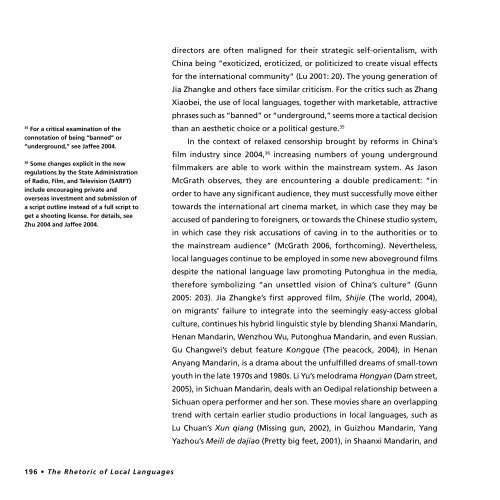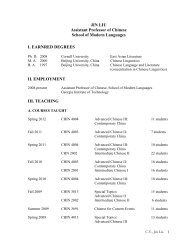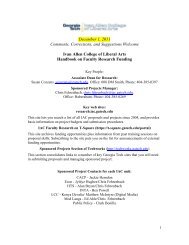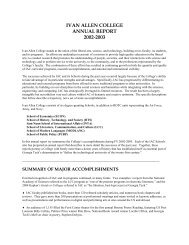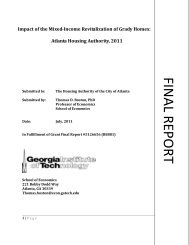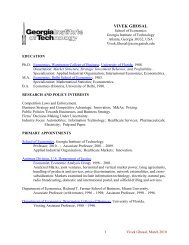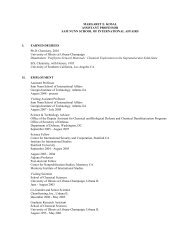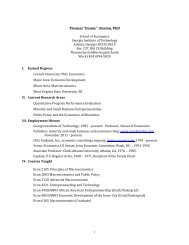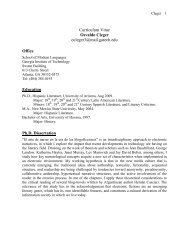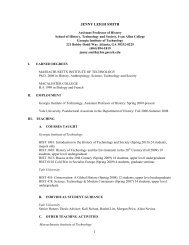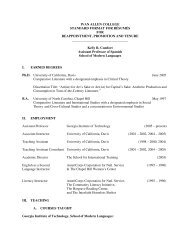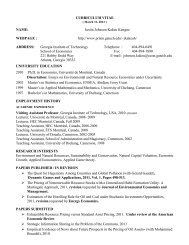Read this paper
Read this paper
Read this paper
Create successful ePaper yourself
Turn your PDF publications into a flip-book with our unique Google optimized e-Paper software.
35<br />
For a critical examination of the<br />
connotation of being “banned” or<br />
“underground,” see Jaffee 2004.<br />
36<br />
Some changes explicit in the new<br />
regulations by the State Administration<br />
of Radio, Film, and Television (SARFT)<br />
include encouraging private and<br />
overseas investment and submission of<br />
a script outline instead of a full script to<br />
get a shooting license. For details, see<br />
Zhu 2004 and Jaffee 2004.<br />
directors are often maligned for their strategic self-orientalism, with<br />
China being “exoticized, eroticized, or politicized to create visual effects<br />
for the international community” (Lu 2001: 20). The young generation of<br />
Jia Zhangke and others face similar criticism. For the critics such as Zhang<br />
Xiaobei, the use of local languages, together with marketable, attractive<br />
phrases such as “banned” or “underground,” seems more a tactical decision<br />
than an aesthetic choice or a political gesture. 35<br />
In the context of relaxed censorship brought by reforms in China’s<br />
film industry since 2004, 36 increasing numbers of young underground<br />
filmmakers are able to work within the mainstream system. As Jason<br />
McGrath observes, they are encountering a double predicament: “in<br />
order to have any significant audience, they must successfully move either<br />
towards the international art cinema market, in which case they may be<br />
accused of pandering to foreigners, or towards the Chinese studio system,<br />
in which case they risk accusations of caving in to the authorities or to<br />
the mainstream audience” (McGrath 2006, forthcoming). Nevertheless,<br />
local languages continue to be employed in some new aboveground films<br />
despite the national language law promoting Putonghua in the media,<br />
therefore symbolizing “an unsettled vision of China’s culture” (Gunn<br />
2005: 203). Jia Zhangke’s first approved film, Shijie (The world, 2004),<br />
on migrants’ failure to integrate into the seemingly easy-access global<br />
culture, continues his hybrid linguistic style by blending Shanxi Mandarin,<br />
Henan Mandarin, Wenzhou Wu, Putonghua Mandarin, and even Russian.<br />
Gu Changwei’s debut feature Kongque (The peacock, 2004), in Henan<br />
Anyang Mandarin, is a drama about the unfulfilled dreams of small-town<br />
youth in the late 1970s and 1980s. Li Yu’s melodrama Hongyan (Dam street,<br />
2005), in Sichuan Mandarin, deals with an Oedipal relationship between a<br />
Sichuan opera performer and her son. These movies share an overlapping<br />
trend with certain earlier studio productions in local languages, such as<br />
Lu Chuan’s Xun qiang (Missing gun, 2002), in Guizhou Mandarin, Yang<br />
Yazhou’s Meili de dajiao (Pretty big feet, 2001), in Shaanxi Mandarin, and<br />
196 • The Rhetoric of Local Languages<br />
MCLC 18.2.indd 196<br />
12/20/06 2:01:40 PM


